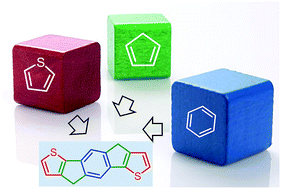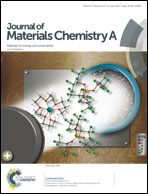Indacenodithiophene: a promising building block for high performance polymer solar cells
Abstract
Harvesting energy directly from sunlight using photovoltaic technology has become an essential component of future global energy production. Although silicon-based inorganic materials still play a dominant role in the market, problems for inorganic materials-based solar cells mainly lie in (1) the high cost of production and technical difficulties in the fabrication of large-area cells and (2) supply of highly purified silicon. In contrast to inorganic photovoltaic materials, organic/polymer photovoltaic materials have currently become of broader interest owing to their great potential to bring about a major breakthrough in reducing the cost of solar cells. As a promising building block to construct narrow bandgap semiconductors for high-efficiency photovoltaics, structurally well-defined indacenodithiophene (IDT) and its derivatives have inspired great interest in the industrial and academic communities over recent years due to their rigidified and tunable coplanar fused ring aromatic structures, and 3D conformation as well. The aromatic fused-ring blocks efficiently restrain rotational disorder and consequently lower reorganization energy. An encouraging power conversion efficiency of more than 12% has been achieved in the IDT-based polymer solar cells. This review surveys recent research advances in the area of IDT-based conjugated materials for photovoltaic applications. The factors affecting the bandgaps, molecular energy levels, film morphologies, as well as the photovoltaic performance of these materials have also been discussed.

- This article is part of the themed collection: Recent Review Articles


 Please wait while we load your content...
Please wait while we load your content...